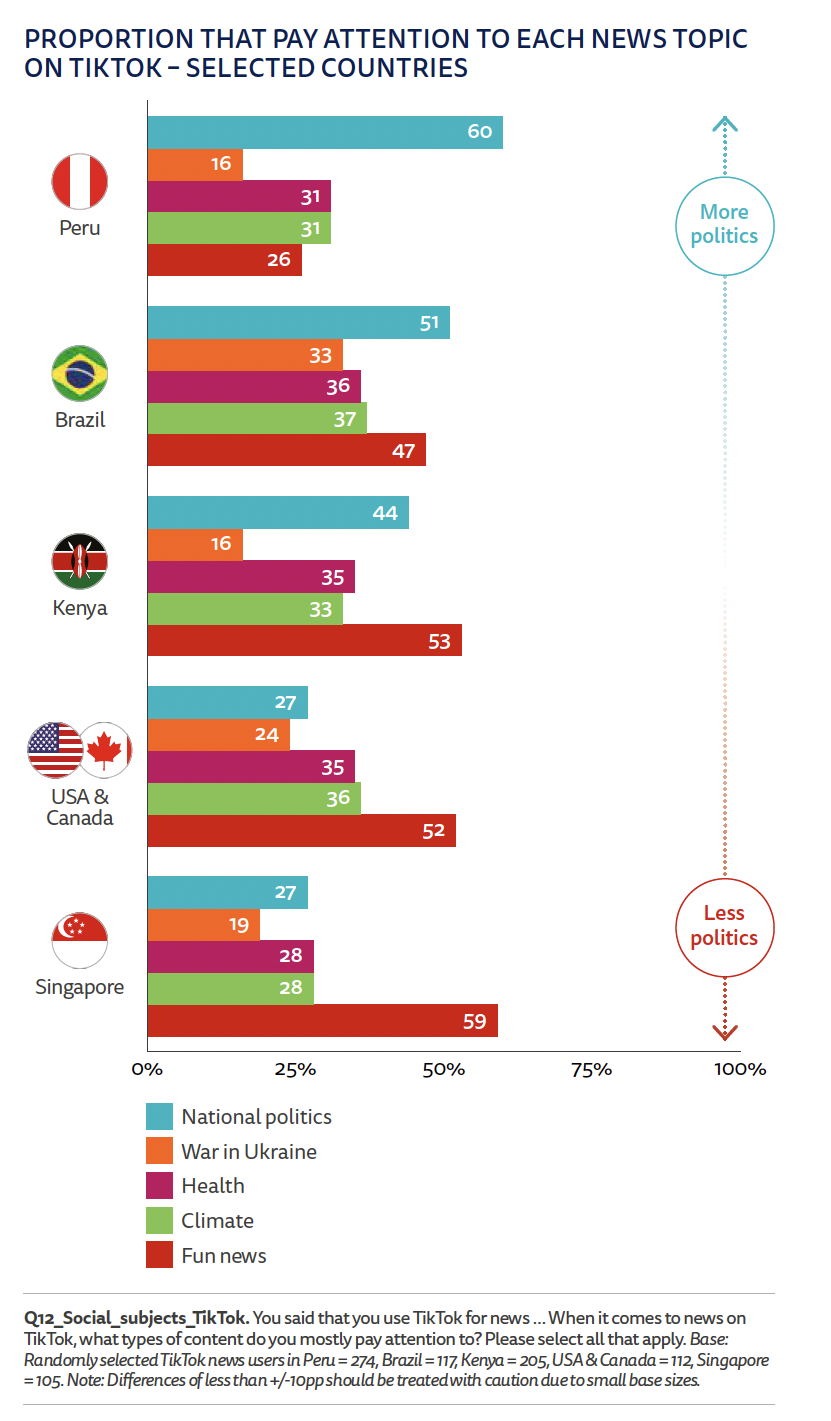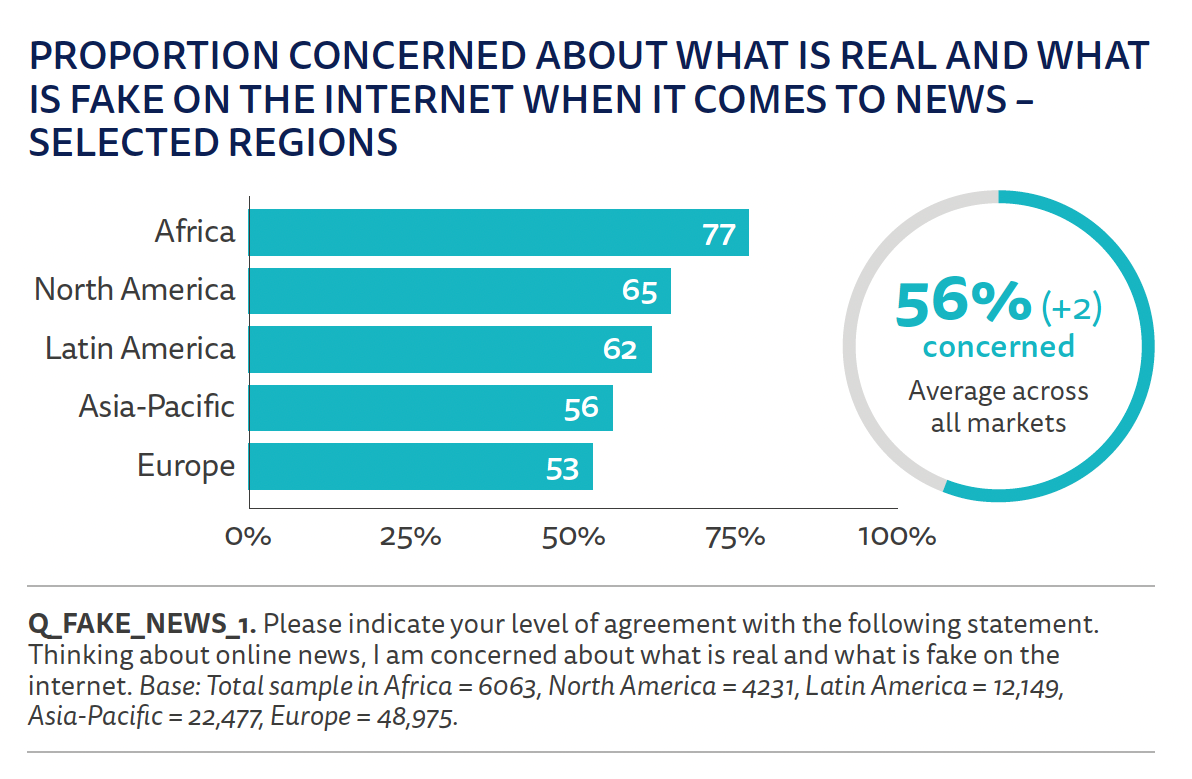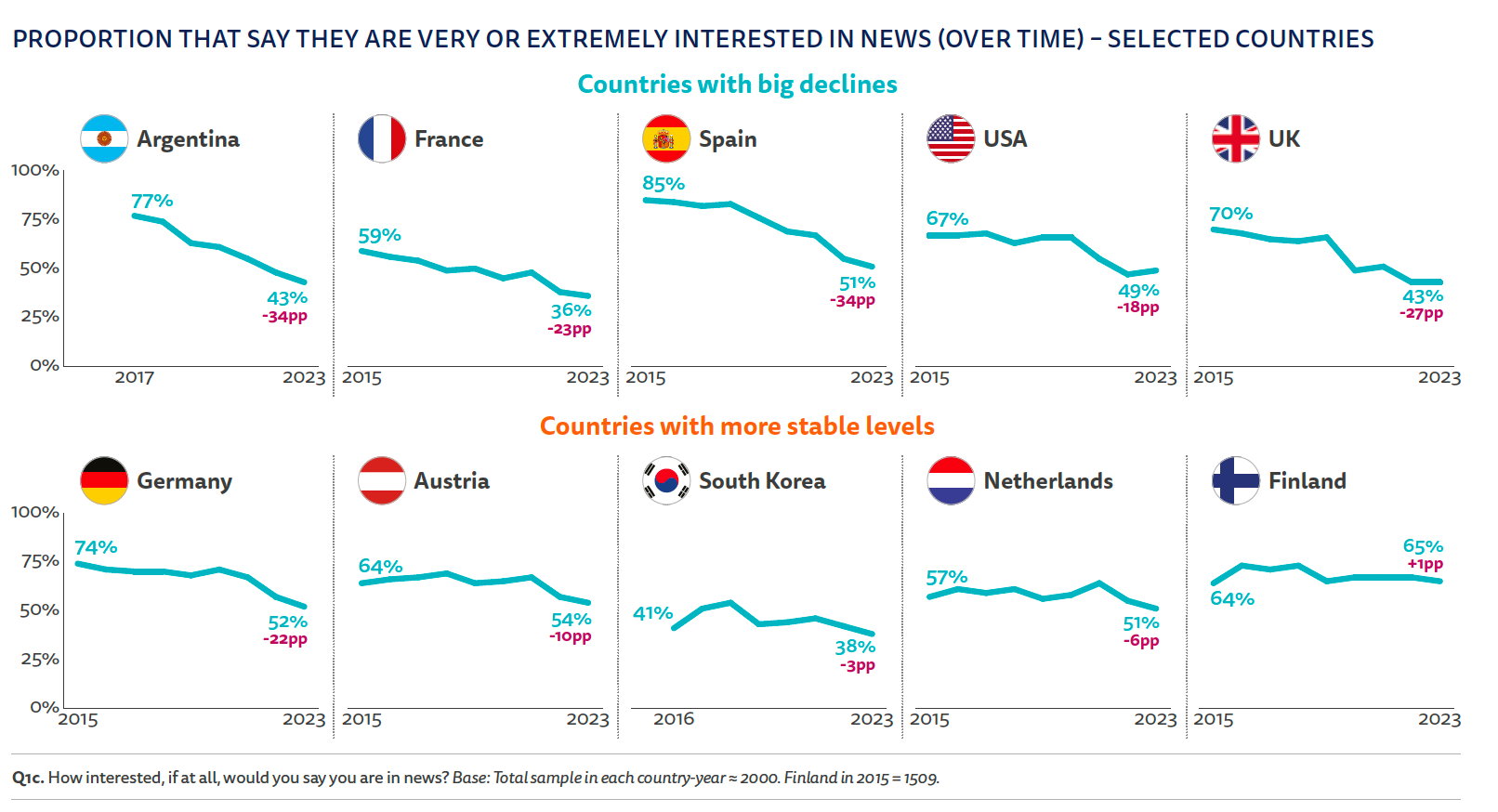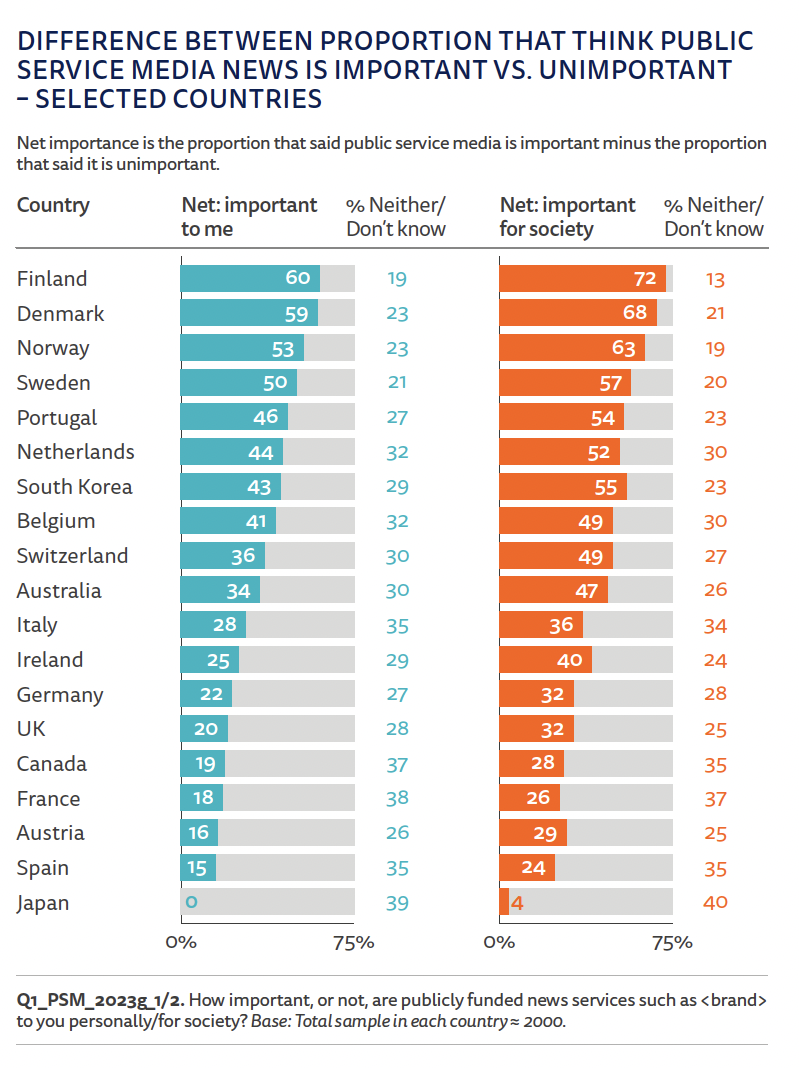This month, the Reuters Institute for the Study of Journalism published its latest Digital News Report. The 2023 publication covers 46 markets around the world and features findings from a survey of more than 93,000 digital news users.
I’ve dug deep into the report to identify some of the most interesting findings, focusing on data from outside the U.S. Here are five takeaways – and their implications – that you may have missed.
(1) TikTok is no longer a fringe channel
Proof, if it were needed, of the importance of the Chinese-owned app is front and center in the new report. TikTok is the fastest-growing social network in the Institute’s survey.
One in five 18-24-year-olds (20%) harness the platform for news, with nearly half of this demographic (44%) using the network on a regular basis. For outlets wanting to reach younger audiences, this provides strong evidence that a presence on TikTok really needs to be part of your portfolio.

Generally, usage of TikTok is heaviest in parts of Asia, Latin America and Africa, while the popularity of the platform for news is highest in Peru and Thailand (30% having used in the past week), with Kenya (29%) following close behind. Journalists and media companies may want to look at these markets to determine some of the lessons that they can apply to their own approaches, andlook to learn from their peers at some of the bigger outlets (e.g., The Washington Post) that are on this platform.
It's also notable that “while mainstream journalists often lead conversations around news in Twitter and Facebook, they struggle to get attention in newer networks like Instagram, Snapchat, and TikTok,” the report notes. In those spaces, “personalities, influencers, and ordinary people are often more prominent, even when it comes to conversations around news.”
Again, there’s much to learn in terms of why that’s the case and how these groups use the platform. It highlights, too, why partnering with personalities and influencers may be important for newsrooms if they want to increase their impact on TikTok.
The data also shows that TikTok viewing isn’t just focused on “fun news” and viral content. In some markets, it’s also a popular channel for diving into domestic politics, health news and wider geo-political events. Understanding these behaviors is important if newsrooms are to tap into TikTok’s potential by offering the right content mix on the platform.

(2) Online misinformation is a huge challenge (and an opportunity for newsrooms)
More than half (56%) of survey respondents reported that they struggle to discern between fact and fiction online. Concern levels are highest in Africa, with more than three-quarters (77%) expressing this concern.
These misgivings can be seen around important topics such as politics, health, and climate change. And the volume of misinformation is shown to increase, in countries such as Kenya and Nigeria, during elections. This is a period when journalists – and consumers – need to be most on their guard.
We seldom see a consensus about how to best tackle this scourge, but news organizations can play a key role in verification, fact-checking, combating rumors and promoting the media literacy skills that netizens need to flourish online.
The report notes that in Taiwan, for example, Watchout (沃草), an independent media organization, produces handbooks on how to spot disinformation; and the Taiwan Fact Checking Center, publishes dozens of articles each week “on issues ranging from consumer scares to geopolitical propaganda.”
Elsewhere, in countries such as Australia and Singapore, efforts are underway to develop codes of practice and consistent ways of dealing with misinformation.

(3) In some markets, more people are tuning out of the news
Interest in news is falling – in some cases precipitously over time – in countries such as Argentina, France and Spain, as well as the U.S. and U.K.
This can be due to a number of factors. Active news avoidance might be triggered by the tone and style of coverage, perceptions of relevance, and disinterest in certain topics. These are challenges that newsrooms will need to address if they are to try and reverse these trends.
“Falls [are] often greatest in countries characterized by high levels of political polarization,” the authors observe.
Alongside this, in nations such as Finland and the Netherlands, countries ”with stable, well-funded media and high trust in institutions” interest levels have remained reasonably consistent. However, this isn’t always a proxy for news interest levels. “Previously stable markets such as Austria and Germany are starting to be affected,” the report cautions.

(4) Public service media needs to win over more hearts and minds
“Public service media continues to face critical scrutiny and skepticism – whether from private sector competitors, some politicians, or parts of the public,” the study states. “Even where the public service mission is accompanied by significant public funding, however, reaching the whole public, and serving everybody, is a challenging remit.”
The report’s data clearly shows this. In only four of the 19 countries sampled did digital news consumers say that publicly funded news services were important to them. The figure was only slightly higher when asked if it was important for society. In multiple markets a large percentage of respondents, typically ranging from 20%-40%, indicated that this output was “neither important nor unimportant” or they didn’t know the answer to this question.
With many public service outlets always facing pressure from a tightening of the public purse strings, it’s important for these outlets to enjoy a breadth of support from across the country. It’s not easy to cater for everyone, but that’s also intrinsic to the public service model.
As the study notes, these findings should not be seen as a reflection on the quality of work being produced by public news providers. But, nevertheless, public service news providers will need to continue their efforts to diversify their content (in terms of style, products and the journalists working for them) in order to stave off criticism and financial threats, as they continue to find their place in an increasingly crowded digital marketplace.

(5) Consumption of news podcasts appears to have plateaued
Podcast fans have access to an incredible range of shows and programs. It’s also a medium that’s incredibly attractive to publishers and advertisers alike, as usage skews towards younger and more affluent consumers.
However, although the number of people listening to podcasts has grown in the last five to six years, the number of people accessing news podcasts has remained pretty static.

Since 2018, consumption of podcasts on a monthly basis has grown by 5%, from 29% to 34%, across the markets sampled in the report. Listening to news podcasts remains virtually unchanged, nudging up from 11% in 2018 to just 12% in 2023.
This finding does not take into account the volume of podcasts that this 12% of respondents is listening to. But it does show the difficulty of punching through and bringing non-news listeners to this medium.
Given the investment many media outlets have put into podcasting, and the volume of fresh news podcasts that have launched in the last half decade, the data suggests that these efforts are not necessarily helping news providers find new audiences.
This could be because of the breadth of non-news podcasts that are out there (remember, the number of people listening to all podcasts has grown). Factors associated with news avoidance (style, tone, relevance) may also be applicable here. And it’s possible that the sheer number of podcasts is also a turn-off for some audiences.
As a result, newsrooms may need to do more to bring new listeners into the podcasting fold, investing more in marketing and diversifying their audio offering.
At the same time, perhaps outlets also need to think differently about their podcasting strategy. Podcasts may not be the right way to attract new audiences. Other approaches may be more effective here. Yet they can be a valuable means to engage younger audiences. And they’re also a great way to super serve existing audiences, by digging deeper into specific topics as well as offering audiences a chance to peek behind the curtain of how the news is made.
To find out more, dig into the whole report.
Photo by Wesson Wang on Unsplash.
Screenshots pulled from the Digital News Report.


